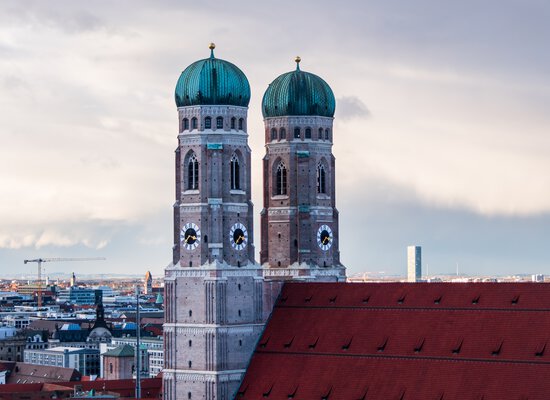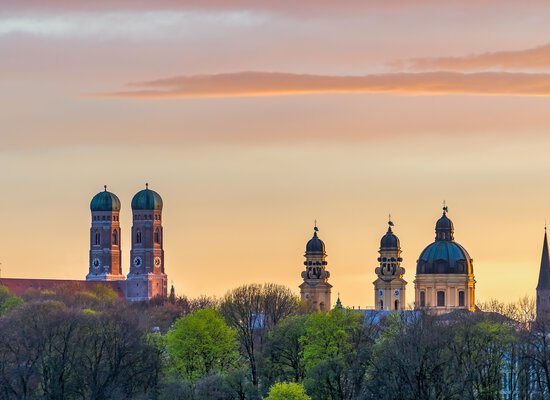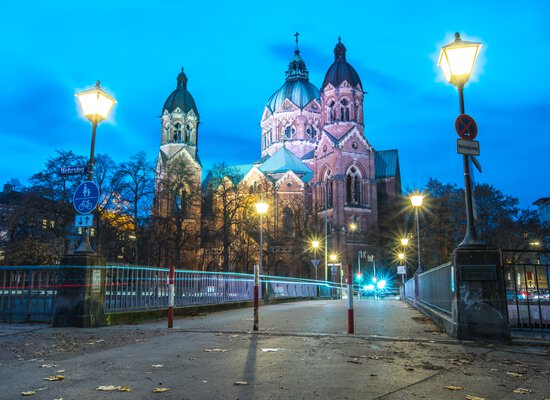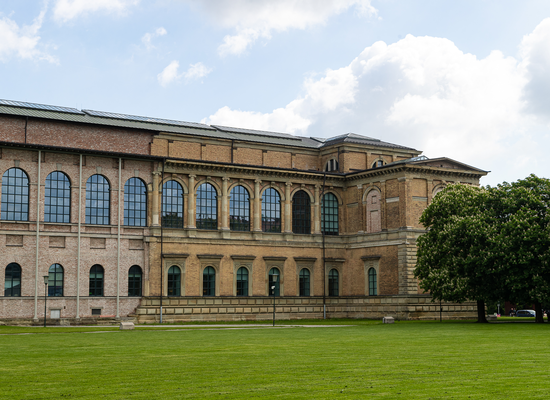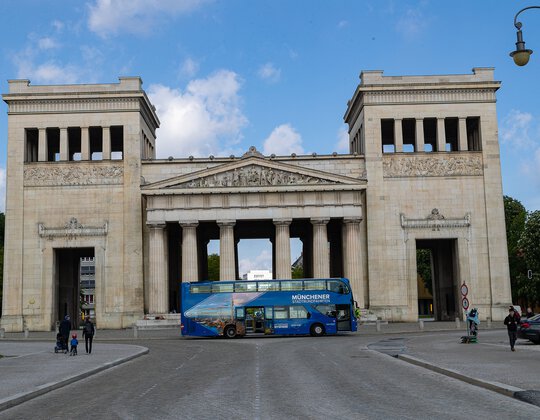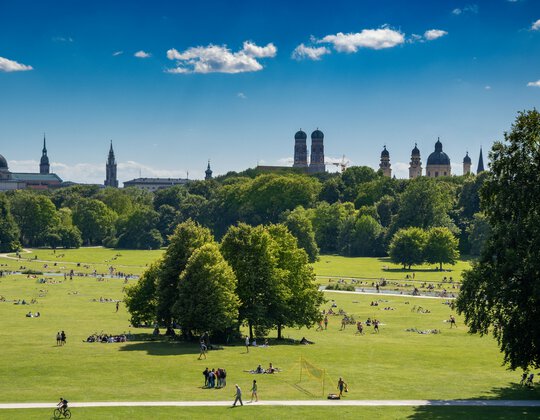
Churches in Munich: A tour of the city's most beautiful churches
Munich, known for its beer gardens and lively culture, also has a special religious atmosphere at Easter. The city's churches are not only places of faith, but also impressive buildings that invite you in with festive services and atmospheric decorations, especially at Easter time. When the Easter candles are lit and solemn music is played, a very special atmosphere is created. Join us on a tour of Munich's most beautiful churches and discover their Easter atmosphere.
The largest church in Munich: The Frauenkirche
When you think of Munich's churches, the first thing that probably comes to mind is the Frauenkirche Munich. The Frauenkirche was built in the late 15th century in the Gothic style (the construction period was from 1468 to 1488) and is now the largest church in Munich and one of the city's most famous landmarks. The church is dedicated to St. Mary and belongs to the Roman Catholic Church. The striking onion domes are visible from many angles in the city and characterize Munich's cityscape. Inside, the church impresses with its simple yet majestic architecture, which is a clear contrast to the baroque splendor of many other churches. The high, light-flooded hall church is particularly impressive, creating a meditative atmosphere. Especially at Easter, the Frauenkirche is a special place for believers and visitors. The festive services, solemn music and Easter decorations invite you to pause for a moment and experience the special atmosphere of this time.
Churches in Munich city center
The churches in Munich's city center are not only religious sites, but also important cultural landmarks. A walk through the city center will show you a variety of different churches representing different eras and architectural styles.
Asamkirche: Baroque splendor
An absolute highlight among the most beautiful churches in Munich is the Asamkirche, which you should visit. This baroque church was built by the Asam brothers, the painter Cosmas Damian Asam and the architect Egid Quirin Asam, in the 18th century (1712-1734). It was originally intended as a private chapel for the brothers and is dedicated to St. John Nepomuk. The Asamkirche is an outstanding example of the late Baroque style and impresses with its lavish and opulent design, which amazes every visitor. The frescoed ceiling and the artistically designed altars make the church a true work of art. At Easter, the Asamkirche becomes a special place of faith with solemn services and festive music. The Easter Vigil in particular, with its atmospheric celebration of light, creates an impressive atmosphere that invites you to pause and join in the celebrations.
Theatinerkirche: a jewel in the rococo style
Another jewel among the churches in Munich is the Theatinerkirche, which was designed in the Rococo style (built between 1663 and 1690). The church belongs to the Roman Catholic Church and was founded by the Theatine Order, a religious order that pursued the goal of promoting education and religious upbringing in Munich. With its striking yellow hue and elegant façade, it is not only an architectural masterpiece, but also an important part of Munich's history. The Theatinerkirche was built according to the plans of architect Agostino Barelli and impresses with its clear and yet very magnificent interior design, which is particularly striking with its golden altar and impressive high altar. When Easter dawns, the Theatinerkirche is transformed into a place of quiet contemplation. The warm, golden light is reflected in the festive church services and concerts, giving the room a special, contemplative touch.
Churches next to the Feldherrnhalle and on Marienplatz
St. Michael's next to the Feldherrnhalle
Not far from the Feldherrnhalle and the Munich Residence, you will find the impressive St. Michael's Church, which is considered one of the largest Renaissance churches north of the Alps. It was built in the 16th century (1583 to 1597) under the direction of architect Jakob Kröger and belongs to the Roman Catholic Church. The magnificent Renaissance-style building is characterized by its monumental façade and stately interior. The expansive dome and the numerous frescoes inside in particular give an idea of the size and importance of this church. At Easter, St. Michael's casts a spell over visitors with its church services. The church, quiet and simply decorated, offers a special setting for the celebrations. The impressive acoustics and atmosphere contribute to making the service a moment of reflection.
Alter Peter on Marienplatz
Alter Peter on Marienplatz is one of Munich's oldest churches and an important part of the city's history. The origins of the church date back to the 11th century, although the current structure was built in the Gothic style (1385 to 1495). Alter Peter also belongs to the Roman Catholic Church. The tower is particularly worth seeing, from where you can enjoy a breathtaking view over the city. The tower was completed in the 17th century and, at 91 meters, is the tallest building in the Old Town. Special services are often held at Alter Peter at Easter, which emphasize the peaceful atmosphere of the church and give visitors a moment of reflection and contemplation.
Other important churches in Munich
In addition to the churches already mentioned, there are many other impressive churches in Munich that are well worth a visit.
Herz-Jesu-Kirche: a neo-Gothic masterpiece
The Herz-Jesu-Kirche in the Schwabing district was built at the end of the 19th century (1892-1894) in the neo-Gothic style and is dedicated to the Sacred Heart of Jesus. It belongs to the Roman Catholic Church and is characterized by its impressive architecture with pointed towers and stained-glass windows. The interior of the church is also a masterpiece of neo-Gothic art with rich furnishings. Special services are often held at Alter Peter at Easter, which emphasize the peaceful atmosphere of the church and give visitors a moment of reflection and contemplation.
St. Luke's Church: a classic of Romanesque architecture
St. Luke's Church is located near the Isar Canal and is considered one of the most important Romanesque churches in Munich. Built in 1890 in the Roman Catholic style, the church is characterized by its impressive domed tower and well-preserved interior. At Easter, St. Luke's Church is a place of worship and special concerts. The warm lighting and Easter lights create a festive atmosphere that makes the church a popular destination for Easter visitors.
St. Anna in Lehel: a baroque masterpiece
St. Anna's Church in Lehel is another baroque gem that you should visit. Its magnificent interior and ornate altars make this church a fascinating destination for architecture and art lovers. The church was built in the 17th century in the Baroque style and belongs to the Roman Catholic Church. Especially at Easter, when the space is illuminated by soft Easter lights, St. Anne's is a wonderful place for a quiet moment of devotion.
Conclusion: Munich's churches - a cultural heritage to marvel at
Munich's churches are far more than just religious sites. They are an important part of the city's history and a fascinating example of different architectural and artistic styles. From the Gothic splendor of the Frauenkirche to the baroque decorations of the Asamkirche and the elegant rococo details of the Theatinerkirche - there is a lot to discover in Munich. Especially at Easter, when the churches are decorated with festive lights and special services and concerts take place, it's the perfect time to experience the spiritual and cultural side of the city. A hop-on hop-off tour through Munich offers you the ideal opportunity to discover these unique churches and learn more about the history of the city.



